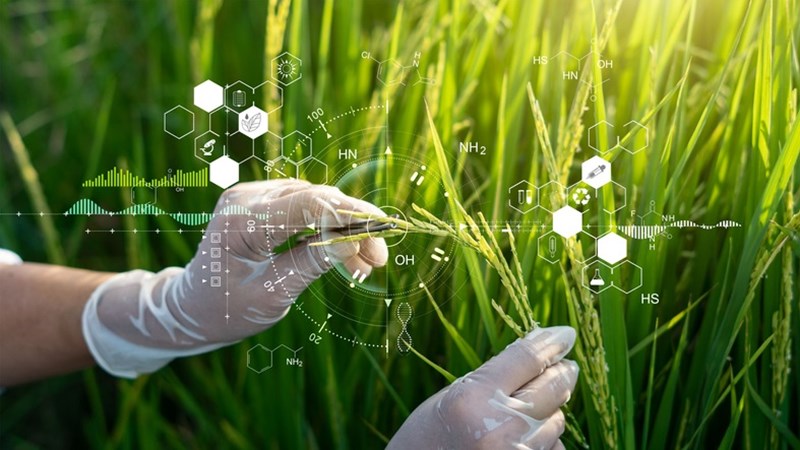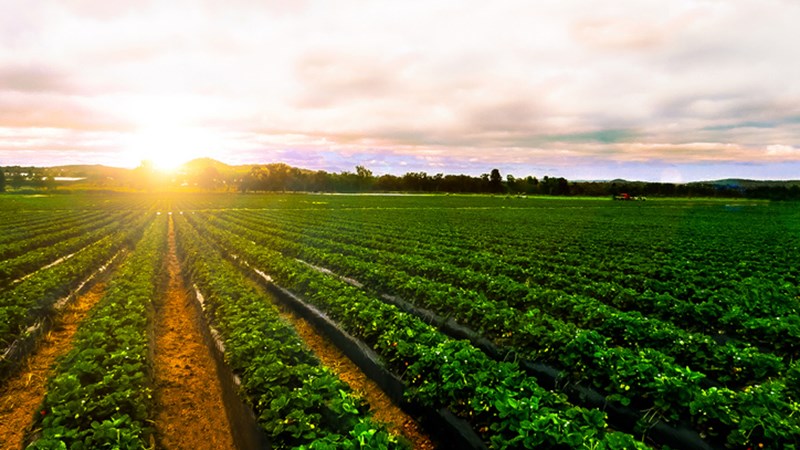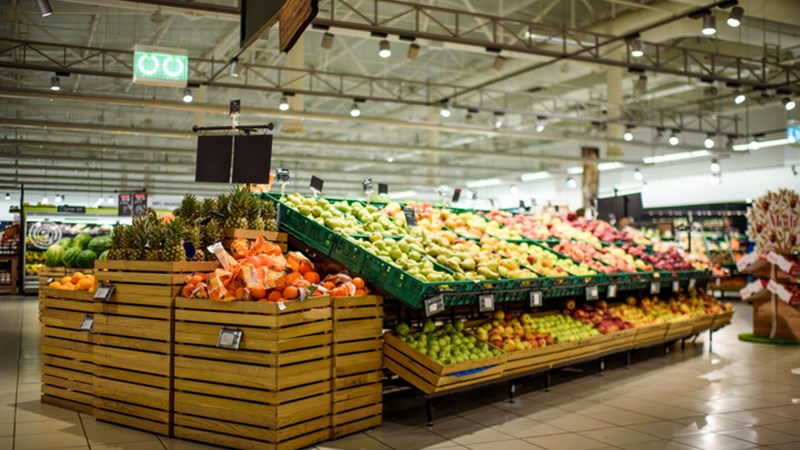Suspicious Organics
July 2022
Suspicion of non-compliance under the New Organic Regulation (EU) 2018/848
Introduction: The EU Organic Regulation
As of 1 January 2022, the New Organic Regulation (EU) 2018/848 has entered into force. One of the main objectives of the EU legislator with the New Organic Regulation was to establish a more efficient market in the European Union (“EU”) with a fairer competition, and to facilitate a sustainable growth of organic production. It aims at reducing complex and unclear legislative norms on organic products and production in general and at ensuring a harmonised approach across the EU regarding the measures to be taken in the case of suspicion of non-compliance with the New Organic Regulation.
To achieve these objectives, the New Organic Regulation introduces a new step-by-step system with all the obligations, actions and measures for both operators and competent authorities. The core of this system can be found in Articles 27, 28, 29 and 41 of the New Organic Regulation.
This system is triggered by a ‘suspicion’; but the New Organic Regulation does not define what does, and – more importantly considering the practical impact of the consequences – what does not constitute such a ‘suspicion’. So, whereas the introduction of a step-by-step system to deal with suspected non-compliance issues definitely provides clarity regarding the obligations of the operator and the powers of the competent authorities, the text of the legislation itself leaves room for interpretation, and therefore causes further lack of clarity and risk of different approaches in different member states. We already see different approaches by operators in different member states occurring. Therefore – if you are trading in organic foodstuffs – you need to understand your own duties and those of your counterparties to prevent blocking to soon or too much product, but also to prevent reporting issues to late causing even more damages.
Hereafter we provide with a short overview of the system, the obligations and the issue arising from the unclear scope of the trigger ‘suspicion’.
1. The system in General
The step-by-step system is built along three axes: a) general rules versus additional rules, b) operators versus competent authorities and c) general non-compliance versus non-compliance due to presence of not authorised products or substances. In the first place, the system exists of some main rules that are included in Chapter III on “Production Rules”, such as Articles 27 – 29 of the New Organic Regulation , whilst other rules are included in Chapter VI on “Official Controls and Other Official Activities”. Certain rules focus on the operator, such as Articles 27, 28 and 39 of the New Organic Regulation , whilst other rules hold duties and powers for the competent authorities, such as Articles 29, 37, 38, 40 – 43 of the New Organic Regulation . Lastly, there is a different step-by-step system for handling general (suspected) non-compliance issues – Articles 27, 37 – 43 of the New Organic Regulation , whilst Articles 28 and 29 of the New Organic Regulation only focus on dealing with (suspected) non-compliance issues as a result of the presence of not authorised products or substances.
Hereafter we only focus on the general obligations for the operators and the obligations in case of suspected contamination of the organic product.
2. General non-compliance: obligations of the operator
a. Identification and separation
Article 27 New Organic Regulation contains the main obligations and actions that need to be taken by operators in case the suspect non-compliance. Where an operator suspects that a product it has produced, prepared, imported or has received from another operator does not comply with New Organic Regulation , that operator must identify and separate the product concerned. Although not clearly stated, this obligation will apply to the entire batch or lot.
b. Substantiating the suspicion
After identifying and separating the potentially affected lot(s), the operator will need to check whether the suspicion can be substantiated. It will of course be largely depending on the nature of the suspicion what actions are required and how long that review might take, but the operator will need to be careful that the phase of ‘checking whether the suspicion can be substantiated’ will not lead to undue stretching of time. If after various checks, the operator still has doubts, the conclusion must be that it can neither be eliminated, not substantiated.
c. Placing on the market
Operators will at some point need to decide whether the suspicion can be substantiated or eliminated. As long as the suspicion cannot be eliminated, they cannot place the product concerned on the market as an organic or in-conversion product and not use it in organic production.
d. Notification to buyers and authorities
Where the suspicion a) has been substantiated or b) where it cannot be eliminated, the operator will need to immediately inform the authorities and provide them with available elements, where appropriate. The operator will need to fully cooperate in verifying and identifying the reasons for the suspected non-compliance.
3. Contamination: obligations of the operator
a. Preventing non-compliance
Article 28 New Organic Regulation contains the main obligations and actions that need to be taken by operators in case the suspect non-compliance due to the presence of not authorised products or substances, which is often also described as contamination-issues. Article 28 of the New Organic Regulation starts with several obligations for operators to prevent non-compliance due to the presence of not authorised product or substances. Which products and substances are or are not authorised follows mainly from Article 9, 11, 24 and 25 of the New Organic Regulation. In order to avoid contamination with products or substances that are not authorised in accordance with the first subparagraph of Article 9(3) of the New Organic Regulation for use in organic production, operators shall take the following precautionary measures at every stage of production, preparation and distribution: “(a) put in place and maintain measures that are proportionate and appropriate to identify the risks of contamination of organic production and products with non-authorised products or substances, including systematic identification of critical procedural steps; (b) put in place and maintain measures that are proportionate and appropriate to avoid risks of contamination of organic production and products with non-authorised products or substances; (c) regularly review and adjust such measures; and (d) comply with other relevant requirements of this Regulation that ensure the separation of organic, in-conversion and non-organic products.”
b. Identification, separation, checks, conclusions
Where an operator suspects, due to the presence of a product or substance that is not authorised pursuant to the first subparagraph of Article 9(3) of the New Organic Regulation for use in organic production in a product that is intended to be used or marketed as an organic or in-conversion product, that the latter product does not comply with this Regulation, the operator shall take the same steps as described under Articles 27 of the New Organic Regulation.
Pursuant to Article, 28(3) of the New Organic Regulation laid down additional rules on how to deal with these obligations in a separate implementing regulation. In order to check whether the suspicion can be substantiated in accordance with Article 28(2)(b) of Regulation , the operator shall take into account the following elements:
“(a) where the suspicion of non-compliance concerns an incoming organic or in-conversion product, the operator shall check whether: (i) the information on the label of the organic or in-conversion product and the information on the accompanying documents match; (ii) the information on the certificate provided by the supplier relates to the product actually purchased; (b) where there is a suspicion that the cause of the presence of the non-authorised products or substances lies under the control of the operator, the operator shall examine any possible cause for the presence of non-authorised products or substances.” And where the operator informs the competent authority in accordance with Article 28(2)(d) of Regulation about a substantiated suspicion or when the suspicion cannot be eliminated, the operator provides the following information insofar applicable: “(a) information and documents about the supplier (delivery note, invoice, certificate of the supplier, Certificate of Inspection for organic products (COI)); (b) the traceability of the product with the lot identification, stock quantity, and quantity of product sold; (c) laboratory results, from accredited laboratory when relevant and available; (d) the sampling sheet detailing the time, place and method used to take the sample; (e) any information about any previous suspicion with regard to the specific non-authorised product or substance; [and](f) every other relevant document to clarify the case.”
4. Unclear what causes a suspicion of non-compliance?
The clear step-by-step system of dealing with non-compliance issues, is triggered by a ‘suspicion’; but the New Organic Regulation does not define what does, and – more importantly considering the practical impact of the consequences – what does not constitute such a ‘suspicion’.
Taking into account the legal and economic consequences in the chain of operators once a ‘suspicion’ is present, and – worse – the potential consequences of non-reacting to a circumstance that has been missed as a ‘suspicion’, it is important to have this concept as clear as possible. However, unfortunately the EU legislator has not defined ‘suspicion’ in the definitions. The preambles give only one example: “Such suspicion may, inter alia, arise due to the presence of a product or substance that is not authorised for use in the production of a product that is intended to be used or marketed as an organic or in-conversion product.” This is one example that we could have guessed, based on the specific Article 28(2) of the New Organic Regulation dealing specifically with these kind of ‘suspicions’. It was a grey area under the Old Organic Regulation 834/2007 too, and unfortunately, it has not been in place long enough to provide useful EU wide case law.
So what makes a ‘suspicion’ in the sense of Regulation ? Is a positive sample required? Is one positive sample enough? Does it matter whether the laboratory was accredited for that substance or not? Is one complaint about the colour, smell, size or taste enough? Does it matter whether the complaint comes from a competitor, a consumer or an expert? Is one gossip about a certain producer or country of origin enough? Does it need to be reliable? Does it matter whether this producer has produced non-compliant goods in the past?
To prevent the need for court cases all the way up to the Court of Justice of the EU to provide clarity and uncertainty for the operators and competent authorities in the meantime, I call for European Commission guidelines on the definition of ‘suspicion’ in the sense of the New Organic Regulation . But in the meantime, I believe it is possible to narrow that grey area a little bit: what is the ultimate lower-limit (no suspicion yet) and what is the ultimate upper-limit (definitely a suspicion)?
The grammatical interpretation of the word ‘suspicion’ could pose the ultimate lower-limit. Based on the Oxford Legal Dictionary a ‘suspicion’ is a ‘feeling or thought that something is true or probable’. It provides for an important criterium as one must have reasons to believe that some information is true, or at least probable. A feeling that something could potentially be true, however not likely – does not seem to fall within the definition of suspicious. However, what if an operator genuinely did not have that thought or feeling; could the operator then still have to face consequences for not taking the required legal measures? This does not seem as a practical way to go forward and it is advisable from a lex certa perspective to focus on a more objective criterium.
My suggestion for the ultimate-lower limit would be to draw a parallel with general food law, and in particular with Article 19 of the General Food Law Regulation (EU) 178/2002. This would at least be practical for operators that are equally subject to the General Food Law Regulation (EU) 178/2002 as to the New Organic Regulation , meaning that they can deal with complaints, notifications, samples etcetera in the same way as they would already do. This means that there would exist one equal lower limit for taking measures for all food operators, either conventional or organic. The question that arises is whether this lower limit should be similar to Article 19(1) of the General Food Law Regulation (EU) 178/2002 used for general non-compliance issues or to Article 19(3) of the General Food Law Regulation (EU) 178/2002 used for potential injurious product to human health. In the first situation an operator would need to take measures when it ‘considers or has reason to believe that [the product] is not” in compliance, in the second situation an operator would need to take measures when it “it considers or has reason to believe that [the product] may be […]” not compliant. Although consumer trust is important, I think the legal and economic consequences of stretching the definition of ‘suspicion’ to potential – may – situations, must weigh more. Nevertheless, at the same time, one could question whether it is proportionate to request operators to deal with suspicion of issues of organic quality in the same matter as they need to deal with issues regarding food safety? Taking into account that the ’suspicion’ of the step-by-step system is in fact the first step of a system that can lead to serious enforcement by the authorities – potentially even a ‘criminal charge’ in the sense of the European Convention on Human Rights – it is arguable that we should not interpret this term lightweight and search for the connection with the definition of suspicious from in general administrative and criminal enforcement law. For example: in the Netherlands, this kind of suspicion is defined as: “facts or circumstances that give rise to a reasonable suspicion of guilt of a punishable offence”,[1] which shows that there must be at least certain facts or objectifiable circumstances that constitute the ‘suspicion’.
We should consider the ultimate upper limit of this grey area of defining ‘suspicion’ too: an operator cannot anticipate on its obligation to check whether the suspicion can be substantiated in the sense of Article 27 or 28 of the New Organic Regulation . If operators require more than minimal verification whether there are certain facts or objectifiable circumstances why the product might not be compliant, this means they are most likely already ‘checking’ whether their suspicion can be substantiated. In that case, identifying and separating of the lots is already required. And in any case – whether or not the operator concludes that there is a suspicion and whether or not the operator concludes that the suspicion can be eliminated, a good registration of the information and reasoning is advisable.
5. Conclusion: need for Commission Guidelines
This problem has been signalled by various organisations EU wide, some of which have issued documents that provide help in interpreting the step-by-step systems. However, as the interpretations vary, the risk arises for varying practices in different member states too. We also do not know how the competent authorities and national courts will deal with this in practice.
To prevent the need for court cases all the way up to the Court of Justice of the EU to provide clarity and uncertainty for the operators and competent authorities in the meantime, I call for European Commission guidelines on the definition of ‘suspicion’ in the sense of the New Organic Regulation. Considering the European Commission also strives for rules that correspond to the high expectations of consumers, and initially wished to introduce a zero-tolerance policy, it is my presumption that these guidelines might turn out stricter than currently interpreted in the organic market. However, at the same time the European Commission will need to take into account that a strict interpretation of the ‘suspicion’ will lead to more provisionally blocked organic goods with large economic consequences for the affected operators. This might then – in the long term – jeopardize EU’s larger policy goals.
* * *
[1] Hoge Raad (Dutch Supreme Court), 8 December 2020, ECLI:NL:HR:2020:1973, which can be found on the internet here: <https://deeplink.rechtspraak.nl/uitspraak?id=ECLI:NL:HR:2020:1973> (in Dutch).






